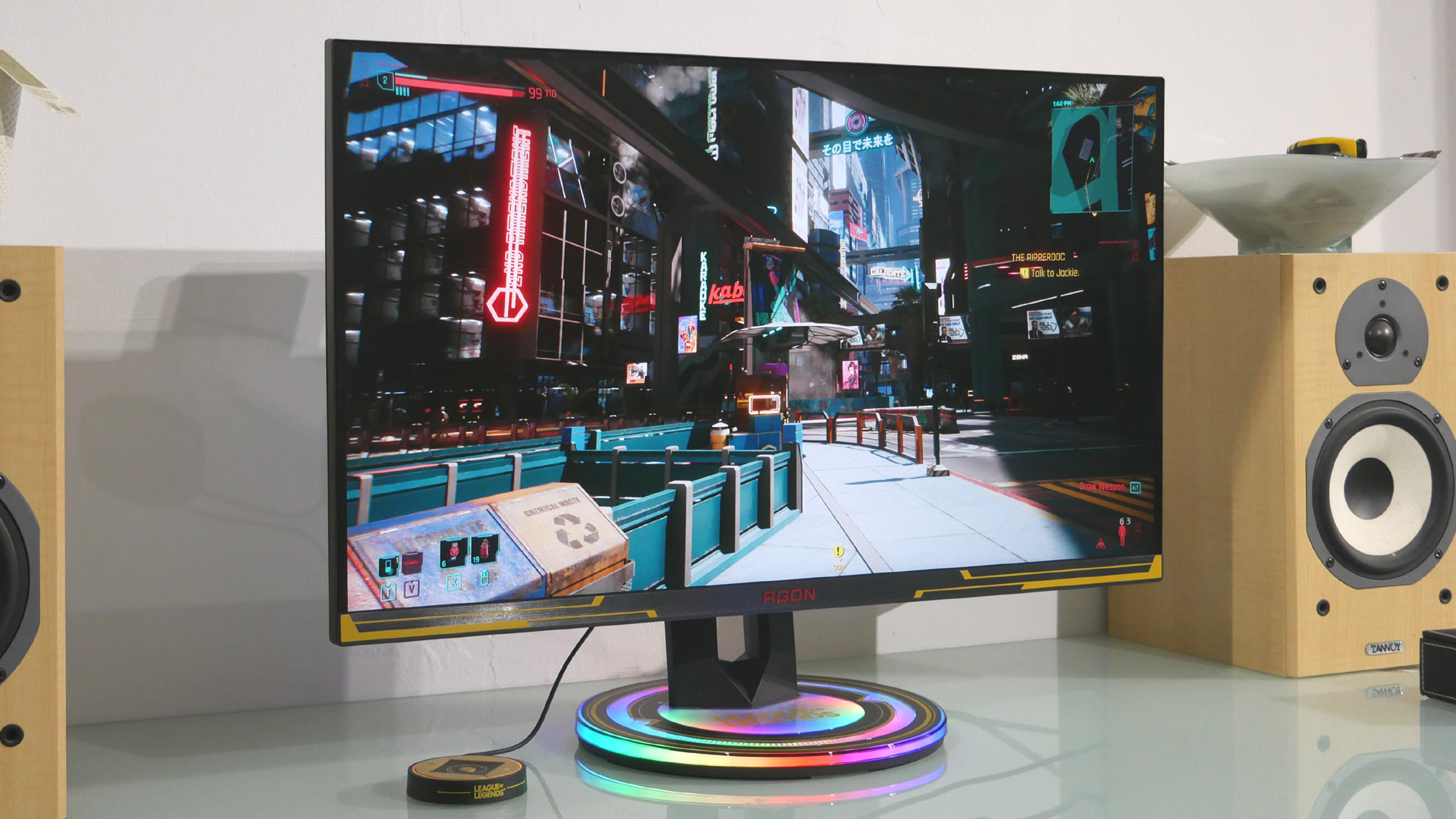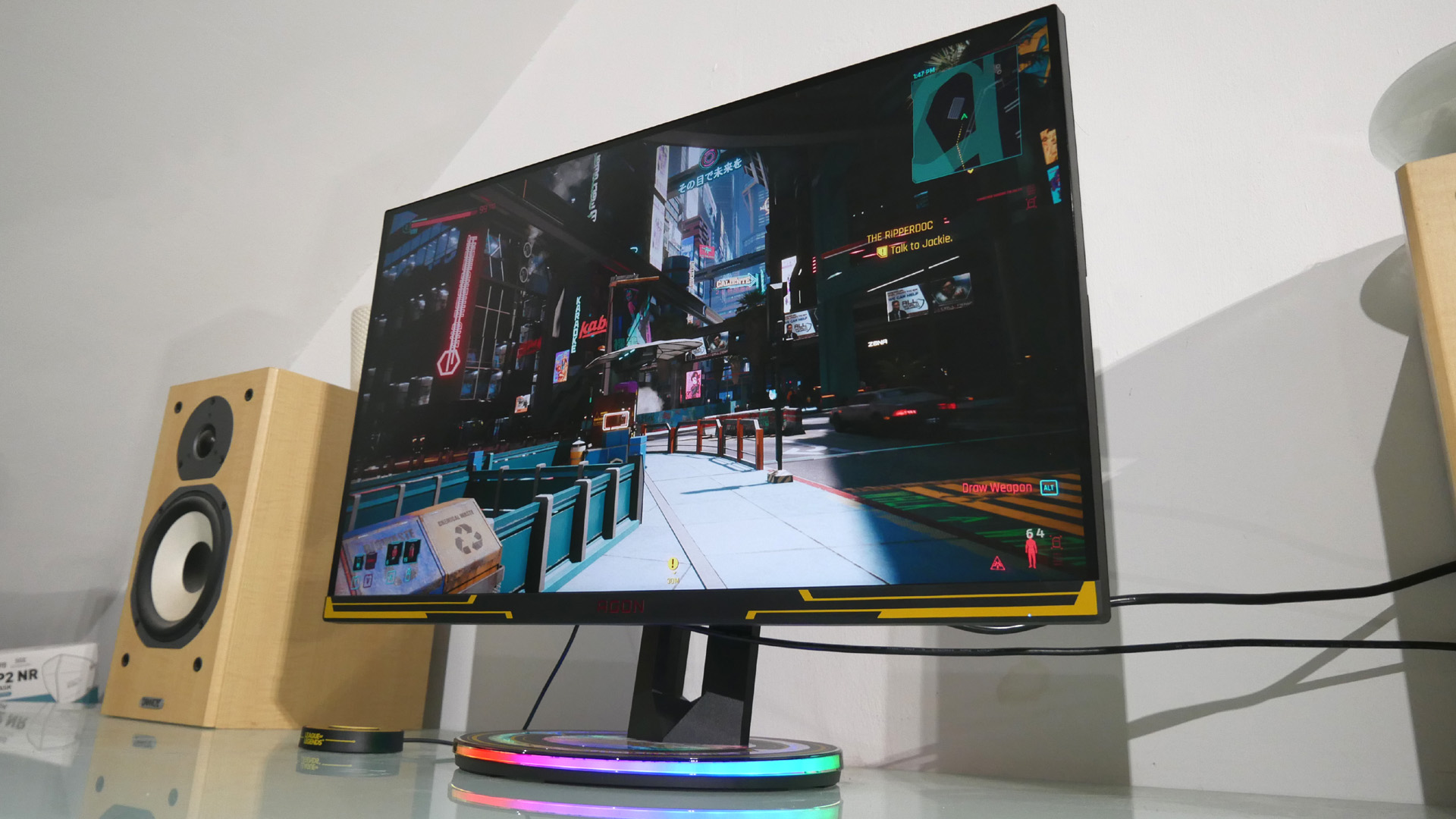GamesRadar+ Verdict
The Acer Predator CG437K is big. It’s bold. But it’s also just a little bit broken. It does some things really well but also suffers from some equally obvious flaws that hold it back from being a world beater.
Pros
- +
Monster-size panel
- +
4K plus 144Hz
- +
Lots of gamer-friendly features
Cons
- -
Pricey
- -
Disappointing response
- -
Mediocre viewing angles
Why you can trust GamesRadar+
The Acer Predator CG437K, also known as the Acer Predator CG7, is an absolute beast. 43 inches, 4K, 144Hz, HDR1000, 1ms response, you get the idea. This is a monumental gaming monitor.
It’s also ready to roll with pretty much every major gaming platform. PC, Xbox, PlayStation, the CG7 is fully compatible with them all thanks to a full range of connectivity including HDMI 2.1. Of course, there are downsides. There just have to be.
The sheer size isn’t always going to be a good thing. Then there’s the price. The CG7 has been on the best gaming monitor market for a little while, so at $1,500/£1,300 this is a pricey panel. And as we’ll see, it’s also not without certain flaws.
Design & Features
If big is beautiful, the Acer Predator CG437K is certainly a looker, all 43-inches of it. What it’s not, is terribly practical or ergonomic. The stand is certainly beefy. But there’s absolutely no adjustment, not even tilt. Of course, if you’re planning on using the CG7 at distance like a TV, that’s probably fine. But as a desktop monitor, the size and lack of adjustment could cause problems.
Still, the CG7 certainly doesn’t lack features. The panel is a 43-inch VA item with a full 4K pixel grid (3,840 by 2,160 pixels), maximum refresh of 144Hz, HDR1000 with local dimming, 1ms claimed response, 4,000:1 static contrast, and 90 percent coverage of the DCI-P3 gamut. That’s one heck of a list.
And yet it’s not all. Connectivity is comprehensive, with HDMI 2.1 giving it the ability to be a PS5 monitor or Xbox Series X monitor, DisplayPort 1.4 for 144Hz 4K PC gaming, and even USB-C, though the latter is limited to 60Hz refresh. Acer also includes an IR remote for tweaking the settings, which is particularly handy if the screen is being used like a TV and is therefore out of easy reach. Oh, and there’s Nvidia G-Sync compatibility and broad adaptive refresh support with both consoles and most of the best graphics cards.

Performance
No question, this is a punchy display. It’s rated at fully 1,000 nits, albeit that’s in HDR mode. Even running in SDR, this thing cranks out some serious visual heat. However, despite claims of sub-2 Delta E numbers across the board, this is not a hugely accurate monitor hugely accurate. In SDR mode, the colors are obviously over-saturated, for example.
The color calibration in HDR mode is actually quite a bit better. But HDR brings its own issues. Acer doesn’t quote the number of dimming zones the CG7 offers, but in our testing, it’s clearly in the region of just 14 to 16 edge-lit zones. This means that the CG7 doesn’t actually have local dimming on a practical level. The zones are just too big.
That said, the inherent contrast of the VA panel Acer has chosen does make for a reasonable HDR experience. But not a terribly speedy one. 1ms may be the response claim, but like many VA panels, the response is pretty sluggish. Even with the pixel overdrive maxxed out, there’s still some obvious smearing, plus plenty of overshoot and inverse ghosting. Dial down the overdrive and the ghosting improves but the smearing gets worse.

Making matters worse, the viewing angles aren’t great and 4K on a 43-inch panel doesn’t actually make for terribly good pixel density, something that’s obvious from the Windows desktop in the form of slightly rough-looking fonts. If that isn’t necessarily a major issue for gaming, how do the rest of the pros and cons impact the gaming experience?
There’s certainly a lot to like. The sheer scale of this thing is great for strategy games like the Total War series where you get a really epic view of the battlefield. The resolution and HDR support mean graphics-lead titles like Deathloop do look pretty stunning, too, making this worth some time in the best 4K gaming monitor conversation.
But that’s in static terms. The in-game response isn’t disastrous. But the smearing and blurring are slightly visible and that’s disappointing on what is an expensive out-and-out gaming monitor. As for latency, well, if you have a top-end graphics card, the 144Hz refresh will ensure a snappy response. And now that GPUs are widely available and prices have normalised, that is at least a possibility. But we wouldn’t recommend trying to pair this panel with a mid-range graphics card. There are just too many pixels to pump.

Overall - should you buy it?
The Acer Predator CG437K is one of those monitors that does some things really well but also suffers from some equally obvious flaws - a nice panel held back by some missteps. With the CG7, it’s the mediocre pixel response that’s hardest to accept. It’s not absolutely awful, but it’s not what you’d expect from this class of gaming monitor.
The narrow viewing angles and low-spec local dimming don’t exactly sweeten the deal. More than anything, at this price point you’re not far off something like an LG OLED 120Hz 4K TV, which is just so much better by most measures that it’s hard to get excited by the prospect of a flawed PC monitor for vaguely similar money.
How we tested the Acer Predator CG437K
Our standard routine includes a mix of test images and real-world usage. We’re looking for everything from color accuracy and response, to latency, brightness and contrast. We test both in SDR and HDR modes to see how a screen performs in each regime. Gaming-wise, we fire up a range of different genres to assess a screen’s suitability, dig deep into the OSD menu and check out all the core features, from refresh rates to adaptive sync. We also consider performance as an all-purpose monitor on the Windows desktop, along with ergonomics and connectivity.
italicsitalicsitalicsitalicsitalicsitalicsitalicsitalicsitalicsitalicsitalicsitalicsitalicsitalicsitalicsitalicsitalicsitalicsitalics
A serious dissertation on the finer points of input lag and overshoot followed by a forensic examination of AI-accelerated temporal upscaling. Such is a routine day in the working life of long-time tech wordsmith, Jeremy Laird. Along with GamesRadar, Jeremy’s 15-year back catalogue includes a host of tech and gaming outlets, including TechRadar and PC Gamer, not to mention contributions to mainstream media from the Independent to the Evening Standard. Complimenting Jeremy’s debilitating addiction to all kinds of digital hardware, he is also afflicted by an obsession with and a significant occupational sideline in cars and automotive technology.



